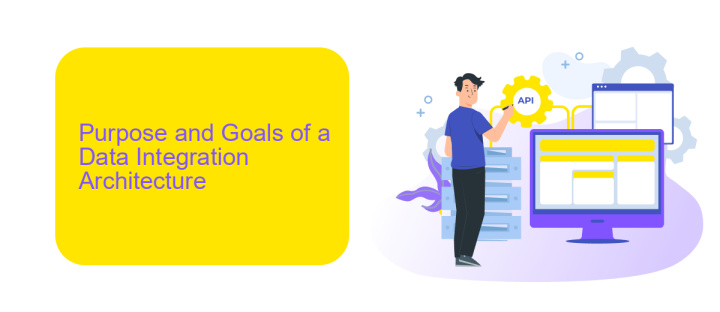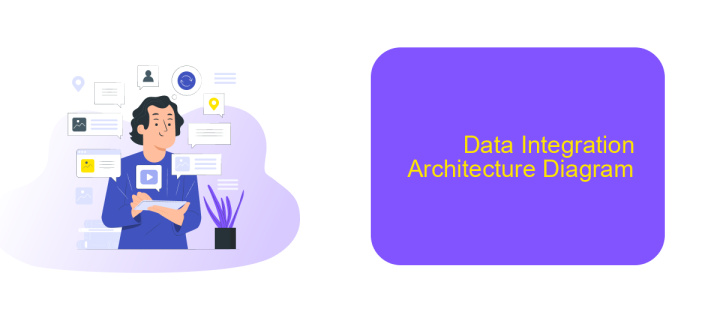Data Integration Architecture Diagram
A Data Integration Architecture Diagram provides a visual representation of how data is collected, processed, and utilized within an organization. It outlines the flow of information between various systems, databases, and applications, ensuring seamless data interoperability. This diagram is essential for understanding the complex interactions in data management and for designing efficient, scalable, and secure data integration solutions.
Introduction
Data integration is a critical component for organizations looking to streamline operations, enhance data accuracy, and make informed decisions. A well-structured data integration architecture diagram is essential for visualizing the flow of data between various systems and ensuring seamless communication.
- Centralized Data Repository: A single source of truth for all organizational data.
- ETL Processes: Extract, Transform, Load operations to ensure data consistency.
- API Integrations: Enable real-time data exchange between disparate systems.
- Data Quality Tools: Ensure the accuracy and reliability of integrated data.
- Monitoring and Logging: Track data flows and identify issues promptly.
Tools like ApiX-Drive can significantly simplify the setup of integrations by providing a user-friendly interface and pre-built connectors for various applications. This allows organizations to automate data workflows without extensive coding, thereby saving time and reducing errors. By leveraging such tools, businesses can focus on deriving insights from their data rather than struggling with integration challenges.
Purpose and Goals of a Data Integration Architecture

The primary purpose of a Data Integration Architecture is to streamline the process of consolidating data from various sources into a unified, cohesive system. This architecture ensures that data from different platforms, applications, and databases can be seamlessly integrated, enabling organizations to have a holistic view of their operations. By doing so, it enhances decision-making, improves data quality, and reduces redundancy. Furthermore, a well-structured data integration architecture supports data governance and compliance, ensuring that data handling meets regulatory standards.
The goals of implementing a Data Integration Architecture include achieving real-time data integration, improving data accessibility, and enhancing scalability. Tools like ApiX-Drive play a crucial role in this context by offering automated integration services that simplify the connection between disparate systems. ApiX-Drive's user-friendly interface and robust functionality help organizations set up integrations without extensive coding knowledge, thereby accelerating the integration process and reducing operational costs. Ultimately, the aim is to create a flexible and efficient data ecosystem that supports the dynamic needs of the business.
Key Components of a Data Integration Architecture

A well-structured data integration architecture is critical for seamless data flow across various systems. Key components ensure that data is accurately and efficiently transferred, transformed, and stored.
- Data Sources: These are the origins of data, which can include databases, APIs, flat files, and cloud services.
- Data Connectors: Tools like ApiX-Drive facilitate the connection between disparate data sources, ensuring smooth data extraction and integration.
- Data Transformation: This involves cleaning, enriching, and converting data into a usable format, often using ETL (Extract, Transform, Load) processes.
- Data Storage: Centralized repositories such as data warehouses or data lakes store integrated data for easy access and analysis.
- Data Governance: Policies, procedures, and tools that ensure data quality, security, and compliance throughout the data lifecycle.
- Data Integration Middleware: Software that manages the communication and data flow between different systems and applications.
Integrating these components effectively creates a robust architecture that supports real-time data analytics, business intelligence, and decision-making processes. Tools like ApiX-Drive simplify the integration of various data sources, making the architecture more efficient and scalable.
Data Integration Architecture Diagram

Data Integration Architecture Diagram serves as a blueprint for how different data sources, processes, and systems interact within an organization. It provides a visual representation of the flow of data, highlighting how information is collected, transformed, and delivered to various endpoints. This diagram is essential for understanding the complexities of data integration and ensuring that all components work seamlessly together.
In the architecture diagram, key elements such as data sources, data transformation processes, and data storage systems are depicted. Each component plays a crucial role in the overall data integration strategy, ensuring that data is accurate, timely, and accessible. By mapping out these elements, organizations can identify potential bottlenecks and optimize their data workflows.
- Data Sources: These can include databases, APIs, and external data providers.
- Data Transformation: Processes that clean, enrich, and format data for use.
- Data Storage: Systems where the processed data is stored, such as data warehouses or lakes.
- Data Delivery: Mechanisms for distributing data to end-users or applications.
Tools like ApiX-Drive can significantly simplify the integration process by allowing users to connect various data sources and automate data flows without extensive coding. By leveraging such tools, organizations can streamline their data integration efforts, reduce manual intervention, and enhance data accuracy and reliability.


Benefits and Challenges of Implementing a Data Integration Architecture
Implementing a data integration architecture offers numerous benefits, including enhanced data consistency, improved decision-making, and streamlined operations. By integrating disparate data sources, organizations can ensure that all departments work with the same information, reducing the risk of errors and discrepancies. This holistic view of data allows for more informed decision-making, as insights are drawn from a comprehensive dataset rather than isolated silos. Additionally, automation of data flows reduces manual efforts, freeing up resources for more strategic tasks.
However, the implementation of a data integration architecture also presents several challenges. One of the primary obstacles is the complexity of integrating diverse data sources, each with its own format and structure. Ensuring data quality and consistency across these sources can be daunting. Moreover, maintaining the integration over time requires continuous monitoring and updates. Tools like ApiX-Drive can simplify this process by offering automated data integration services, which help manage and synchronize data across various platforms seamlessly. Nonetheless, organizations must also address security concerns, ensuring that integrated data remains protected from unauthorized access and breaches.
FAQ
What is a Data Integration Architecture Diagram?
Why is a Data Integration Architecture Diagram important?
What are the key components of a Data Integration Architecture Diagram?
How can I automate the data integration process?
What are the challenges in creating a Data Integration Architecture Diagram?
Apix-Drive is a simple and efficient system connector that will help you automate routine tasks and optimize business processes. You can save time and money, direct these resources to more important purposes. Test ApiX-Drive and make sure that this tool will relieve your employees and after 5 minutes of settings your business will start working faster.

